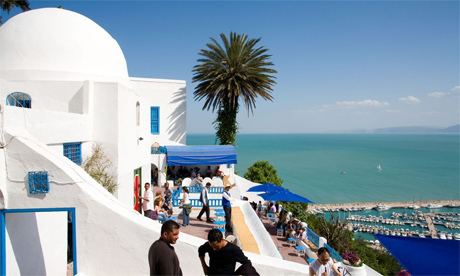Time zone CET (UTC1) Population 5,873 (2012) | Local time Tuesday 3:59 AM | |
 | ||
Area code(s) 36° 52′ 0″ N, 10° 20′ 0″ E Weather 12°C, Wind NW at 8 km/h, 86% Humidity Colleges and Universities Carthage University, IPEST, École Nationale d'Architecture et d'Urbanisme | ||
Tunisia explore sidi bou said carthage
Sidi Bou Said (Arabic: سيدي بو سعيد Sīdi Bū Sɛīd) a town in northern Tunisia located about 20 km from the capital, Tunis.
Contents
- Tunisia explore sidi bou said carthage
- Map of Sidi Bou Said Carthage Tunisia
- Tunis tunisia part 5 sidi bou said
- Artists
- History
- References
Map of Sidi Bou Said, Carthage, Tunisia
Named for a religious figure who lived there, Abou Said ibn Khalef ibn Yahia Ettamini el Beji (previously it was called Jabal el-Menar). The town itself is a tourist attraction and is known for its extensive use of blue and white. Souvenirs can be bought in the main street. It can be reached by a TGM train, which runs from Tunis to La Marsa.
Tunis tunisia part 5 sidi bou said
Artists
Sidi Bou Said has a reputation as a town of artists. Artists who have lived in or visited Sidi Bou Said include Paul Klee, Gustave-Henri Jossot, August Macke and Louis Moillet. Tunisian artists in Sidi Bou Said are members of École de Tunis (painting school of Tunis), such as Yahia Turki, Brahim Dhahak and Ammar Farhat. French philosopher Michel Foucault lived there for a number of years while teaching at the University of Tunis. French author Andre Gide also had a house in the town.
History
In the 12th century/13th century AD Abu Said Ibn Khalaf Yahya al-Tamimi al-Beji arrived in the village of Jabal el-Menar and established a sanctuary. After his death in 1231, he was buried there. In the 18th century Turkish governors of Tunis and wealthy citizens of the latter built residences in Sidi Bou Said.
During the 1920s, Rodolphe d'Erlanger applied the blue-white theme all over the town. His home, Ennejma Ezzahra, is now a museum.
